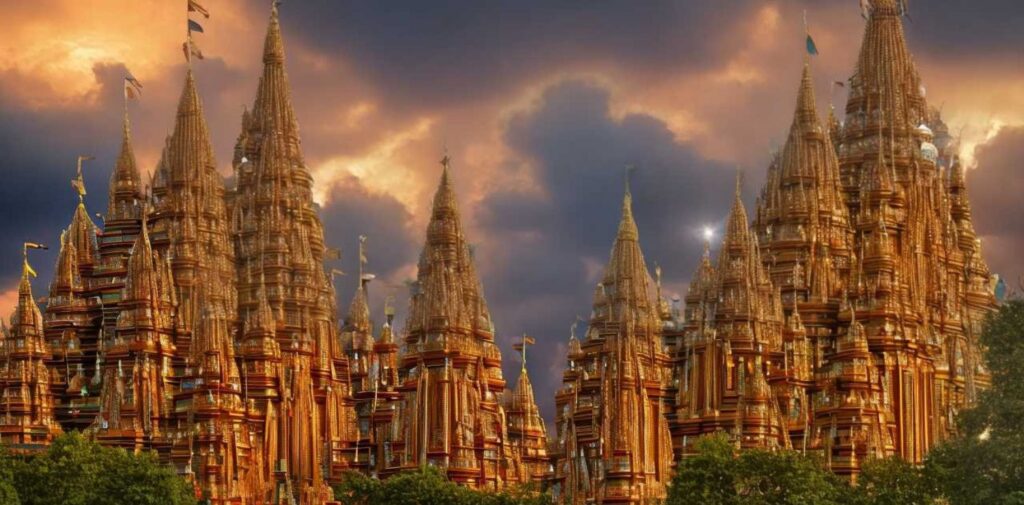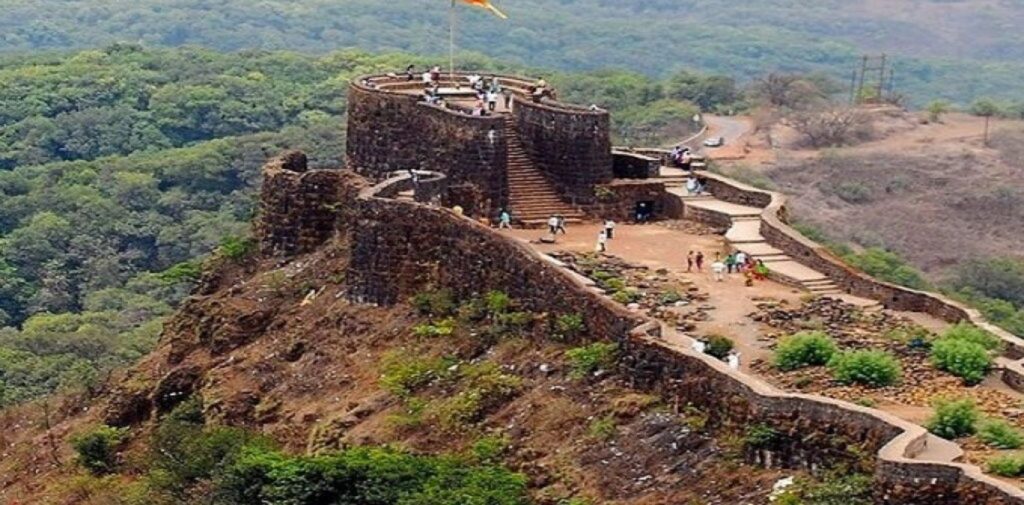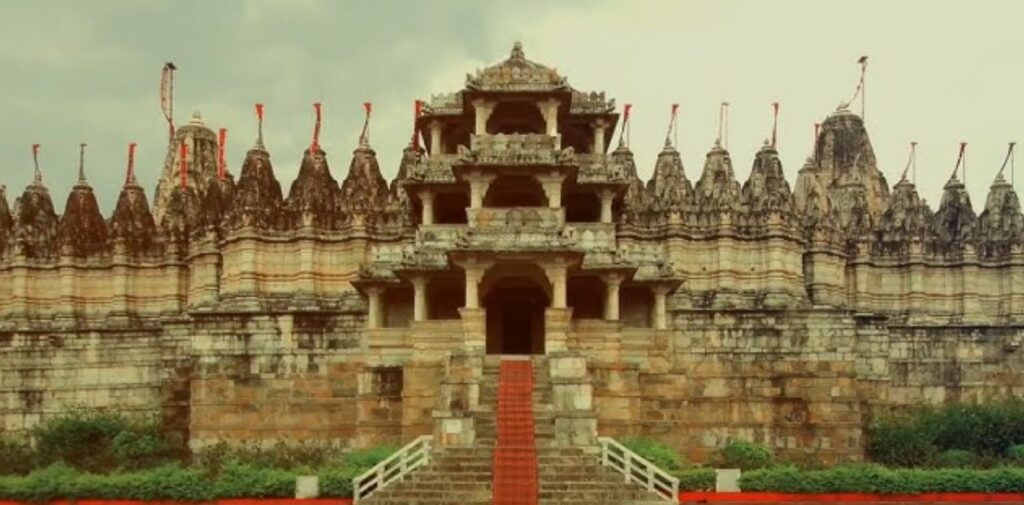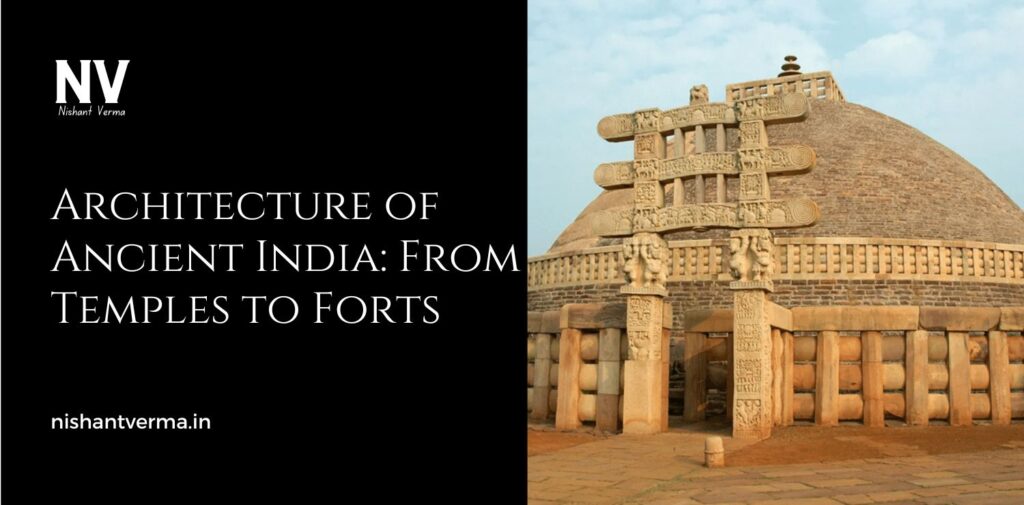India is a land with a rich and diverse history, full of cultures, stories, and incredible structures that have stood the test of time. One of the most fascinating parts of Indian history is its architecture, which has evolved over thousands of years. From magnificent temples to powerful forts, ancient Indian architecture tells us much about the beliefs, skills, and lifestyles of people in the past. This article will take you on a journey through the beautiful and inspiring architecture of ancient India.
Temples: The Heart of Ancient Indian Architecture
In ancient India, temples were not just places of worship but were also symbols of cultural and artistic expression. The temples were built to honour gods and goddesses, and each one was designed with great care and attention to detail.
The most famous temples in India are those that were built during the Gupta Empire (around the 4th to 6th century CE), which is often called the “Golden Age” of Indian history. The Gupta rulers supported the construction of temples, and this led to the rise of many incredible structures.
Shiva and Vishnu Temples
Two of the most important gods in Hinduism, Shiva and Vishnu, had grand temples built for them across India. The Kailasa Temple at Ellora in Maharashtra is a remarkable example. Carved out of a single piece of rock, this temple shows the skill and imagination of ancient architects.
The Konark Sun Temple in Odisha is another famous example. It was built in the shape of a chariot with twelve massive wheels, showcasing the love of nature and engineering in temple design.
Architecture of Temples
The architecture of ancient Indian temples followed certain patterns and styles. For example, many temples had a central sanctum sanctorum, which housed the idol of the god or goddess. Surrounding the sanctum was a larger hall where people gathered for prayers. The entire structure was often surrounded by walls and towers, called Shikhara or Vimana, which reached toward the sky as if to connect the earth with the heavens.
The walls of temples were often beautifully carved with pictures and sculptures of gods, goddesses, animals, and scenes from ancient Indian mythology. These carvings not only showed the skill of the artists but also told stories of religion and life during ancient times.

Forts: Protecting Kingdoms and Emperors
In addition to temples, ancient India is also famous for its forts. These were massive, strong structures built to protect the rulers and their people from enemies. The construction of forts began as early as the Maurya Empire (around the 3rd century BCE) and continued through the ages, especially during the Rajput and Mughal periods.
The Role of Forts
Forts were more than just walls and gates; they were symbols of power and defence. A fort often included strong walls made of stone, watchtowers to keep an eye on enemies, and moats filled with water to keep invaders away. Inside the fort, there were palaces, temples, storage rooms, and living spaces for the soldiers and their families.
One of the most famous forts in India is the Red Fort in Delhi. Built by the Mughal emperor Shah Jahan in the 17th century, this fort has massive walls, beautiful gates, and large courtyards. The Amber Fort in Rajasthan, built by the Rajput rulers, is another example of majestic fort architecture. It has intricate carvings, beautiful gardens, and stunning views.
Mughal Forts
The Mughals were known for their love of beautiful and grand buildings. They combined Persian, Indian, and Central Asian styles to create forts that were not only strong but also incredibly beautiful. The Agra Fort, which is also a UNESCO World Heritage Site, is a perfect example. It has tall walls, many gates, and beautiful palaces that reflect the grandeur of Mughal architecture.
The Golconda Fort in Hyderabad is another example. It is famous for its acoustic system, where even a small sound made at the entrance can be heard at the top of the fort, miles away. This is a brilliant example of ancient Indian engineering.

The Influence of Nature on Indian Architecture
Indian architects in ancient times were heavily influenced by nature, and you can see this in the design of many temples and forts. Gardens were often created within forts to provide beauty and relaxation for the rulers. For example, the Shalimar Bagh in Srinagar is a garden that was designed by the Mughal emperors. The gardens were built with flowing water, fountains, and lush greenery, creating a peaceful environment.
Temples too were often built in places that had natural beauty, such as on hills or near rivers. The Brihadeeswarar Temple in Tamil Nadu, for example, is located on a hill, offering a beautiful view of the surrounding area.
Ancient Indian Engineering and Innovations
The ancient builders of India were not just great artists, but also brilliant engineers. They used advanced techniques that were ahead of their time. For instance, the step-wells in Gujarat and Rajasthan are masterpieces of engineering. These wells were built with many steps going down to the water level, ensuring a steady supply of water even during the hottest summers. The Rani ki Vav stepwell in Patan, Gujarat, is one of the most famous examples.
Many ancient Indian forts and temples were built using interlocking stones without the use of mortar. This allowed the structures to remain strong for centuries.

The Decline and Preservation of Ancient Architecture
Over time, many of India’s ancient structures began to decline due to invasions, neglect, and the passage of time. Some temples were destroyed, and many forts fell into ruins. However, the beauty and importance of these structures have been recognized, and efforts have been made to preserve them. Some, like the Ajanta and Ellora Caves, which contain ancient temple carvings, have been preserved and are visited by millions of tourists every year.
In recent years, there have been many restoration projects to bring back the glory of India’s ancient architecture. These projects not only help us learn about the past but also inspire us with their beauty and the skills of the people who built them.
Conclusion: Architecture of Ancient India
The architecture of ancient India is not just about old buildings; it is a window into the culture, beliefs, and skills of the people who lived in those times. From the grand temples dedicated to gods and goddesses to the strong and majestic forts built for protection, these structures tell stories of India’s rich past.
Whether it’s the towering temples of the Gupta period, the magnificent forts of the Rajputs and Mughals, or the engineering wonders like step-wells, ancient Indian architecture shows us how art, culture, and engineering came together to create lasting works of beauty. By learning about these ancient structures, we can appreciate the greatness of India’s history and understand how it shaped the country we know today.




